Space data center. Summing up the experiment
Friends, on Cosmonautics Day our small server successfully flew into the stratosphere! During the flight, the server aboard the stratostat distributed the Internet, filmed and transmitted video and telemetry data to the ground. And we can not wait to tell you how everything went and what surprises were (well, how could they be without them?).
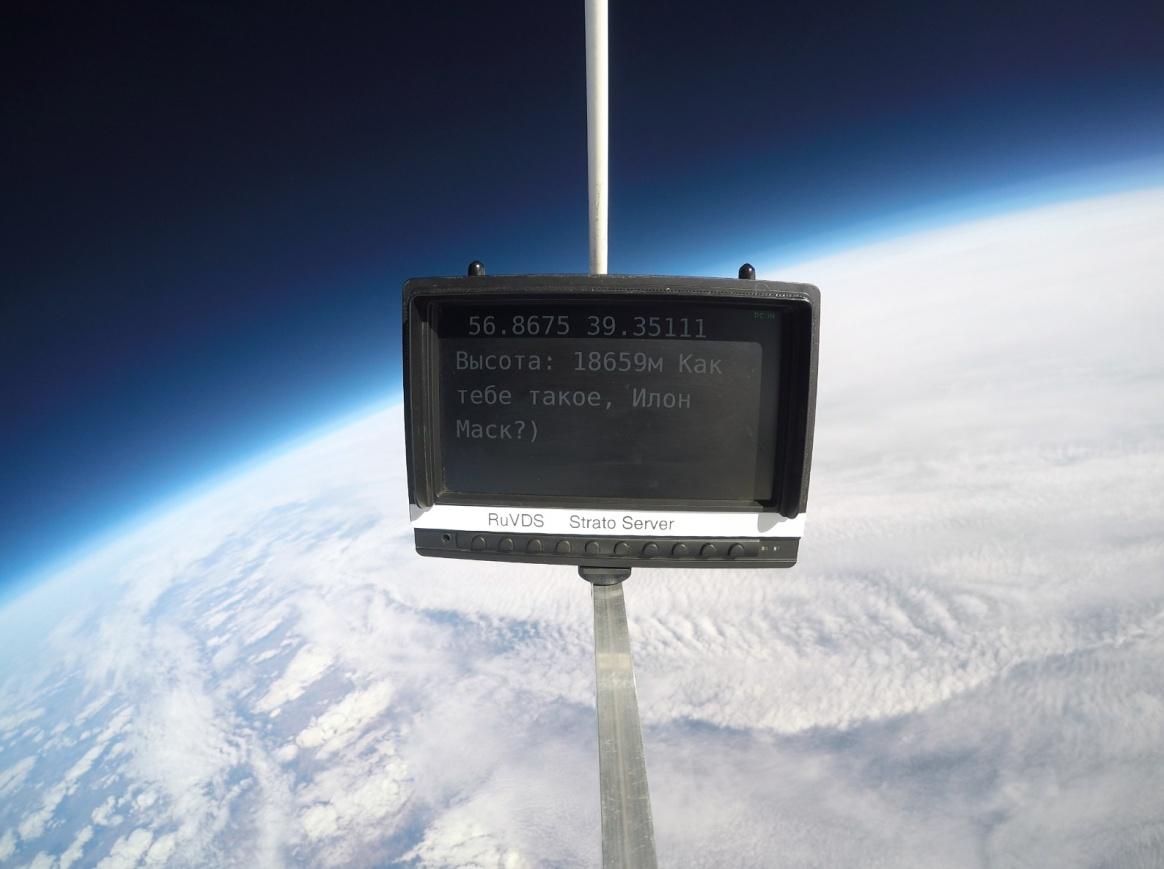
A bit of background and useful links for those who missed everything:
Since we really wanted to launch on Cosmonautics Day and received official permission to use the airspace on that day, we had to adjust to the weather. And in order for the wind not to carry the stratostat over the limits of the allowed zone, we had to limit the height of the climb - instead of 30 km we climbed to 22.7. But this is already the stratosphere, and about twice as high as today passenger planes fly.
')
The internet connection with the stratostat was fairly stable throughout the entire flight. Your messages were received and displayed, and the resulting pauses were filled with quotes from Gagarin’s talks with the Earth 58 years ago :)
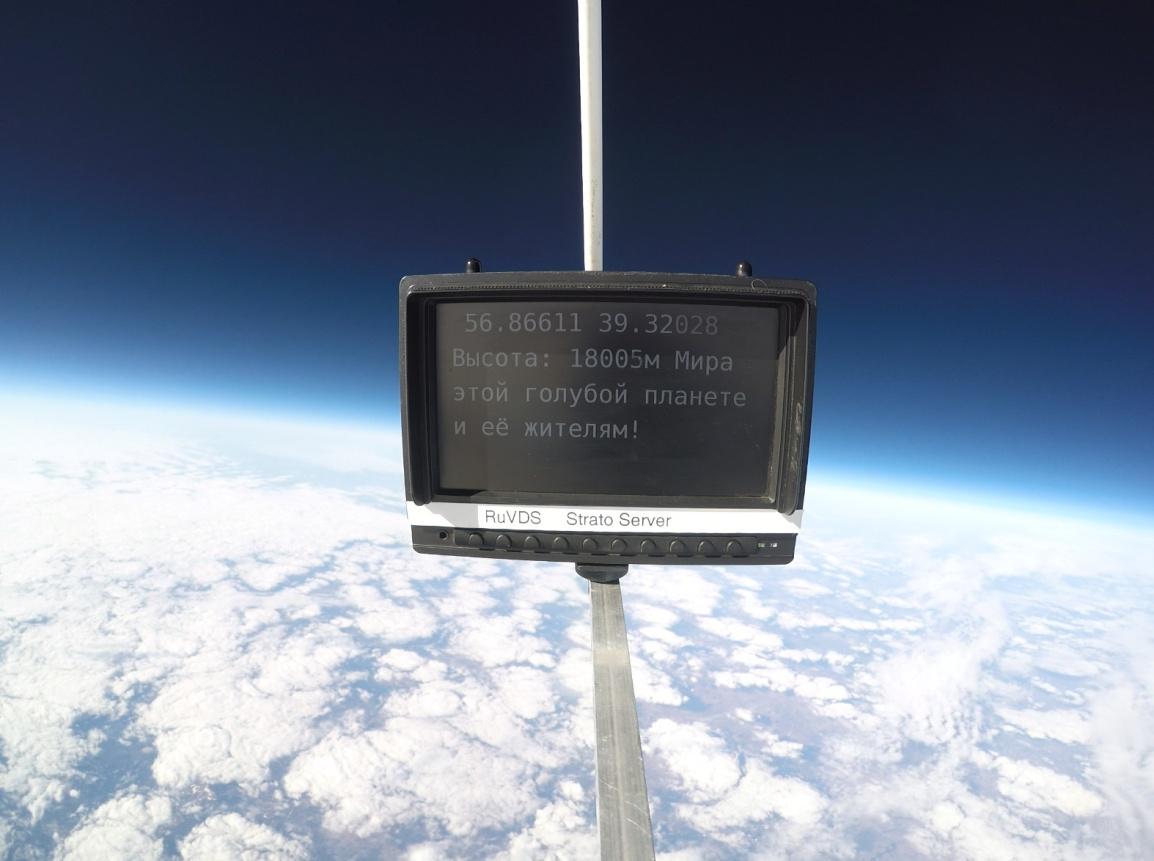
According to telemetry, it was -60 0 overboard, and inside the hermobox it reached -22 0 , but everything worked stably.
The graph of temperature changes inside (here and below on the scale of X dozens of minutes are postponed):
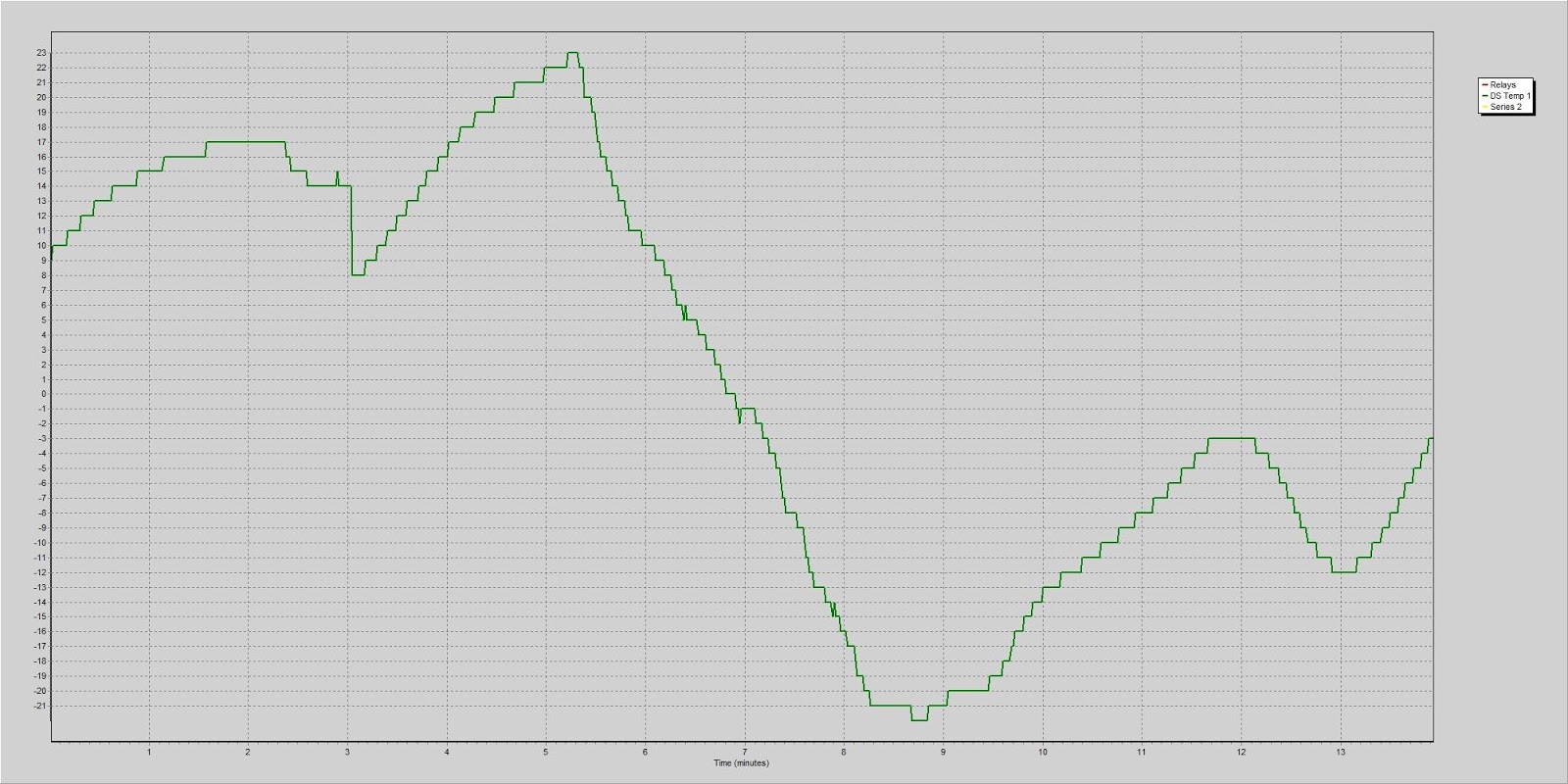
Another experimental digital high-speed transmitter was installed on board. This is our attempt to make high-speed Wi-Fi, and so far we are not ready to disclose the details of its design. With the help of this transmitter, we wanted to broadcast video online. And indeed, despite the cloudiness, the video signal from GoPro on board the stratosphere was received by us at a distance of up to 30 km. But having accepted the video in our TsUPe, it was not possible to transfer it to the Internet by land ... Now we will tell you why.
We will soon show video recordings of the flight from onboard cameras, but for now you can watch the online recording from the board of the probe.
We were waited for by a major surprise: the very poor performance of the 4G modem in our MCC, which made it impossible to transfer video online. Although the probe successfully received and transmitted messages via the Internet, they were received by the server - we received official confirmations from it and saw their display on the screen through video broadcast. We had concerns about communicating with satellites and transmitting a signal to Earth, but no one expected such an ambush that the mobile 4G Internet would be the weak link.

And not in some wilderness, but not far from Pereslavl-Zalessky, in an area that, according to MTS and MegaFon cards, is well covered by 4G. In our mobile MCC stood the heaped-up Kroks ap-205m1-4gx2h router, into which two SIM cards are inserted, and which had to summarize traffic on them so that we could fully broadcast the video to the Internet. We even installed external panel antennas with a gain of 18 dB. But this piece of iron worked disgustingly. Kroks support service could only advise us to fill in the latest firmware, but this did not help, and the speed of operation of two 4G-SIMs turned out to be much worse than the speed of operation of one SIM card in a regular USB-modem. So, if you can tell which piece of hardware is better to organize the transfer of data with the summation of 4G channels next time, write in the comments.

Our calculations of the trajectory were quite accurate, there were no surprises. We were lucky, the stratostatus landed on soft peat ground 10 meters from the reservoir and 70 km from the launch site. GPS Distance Graph:
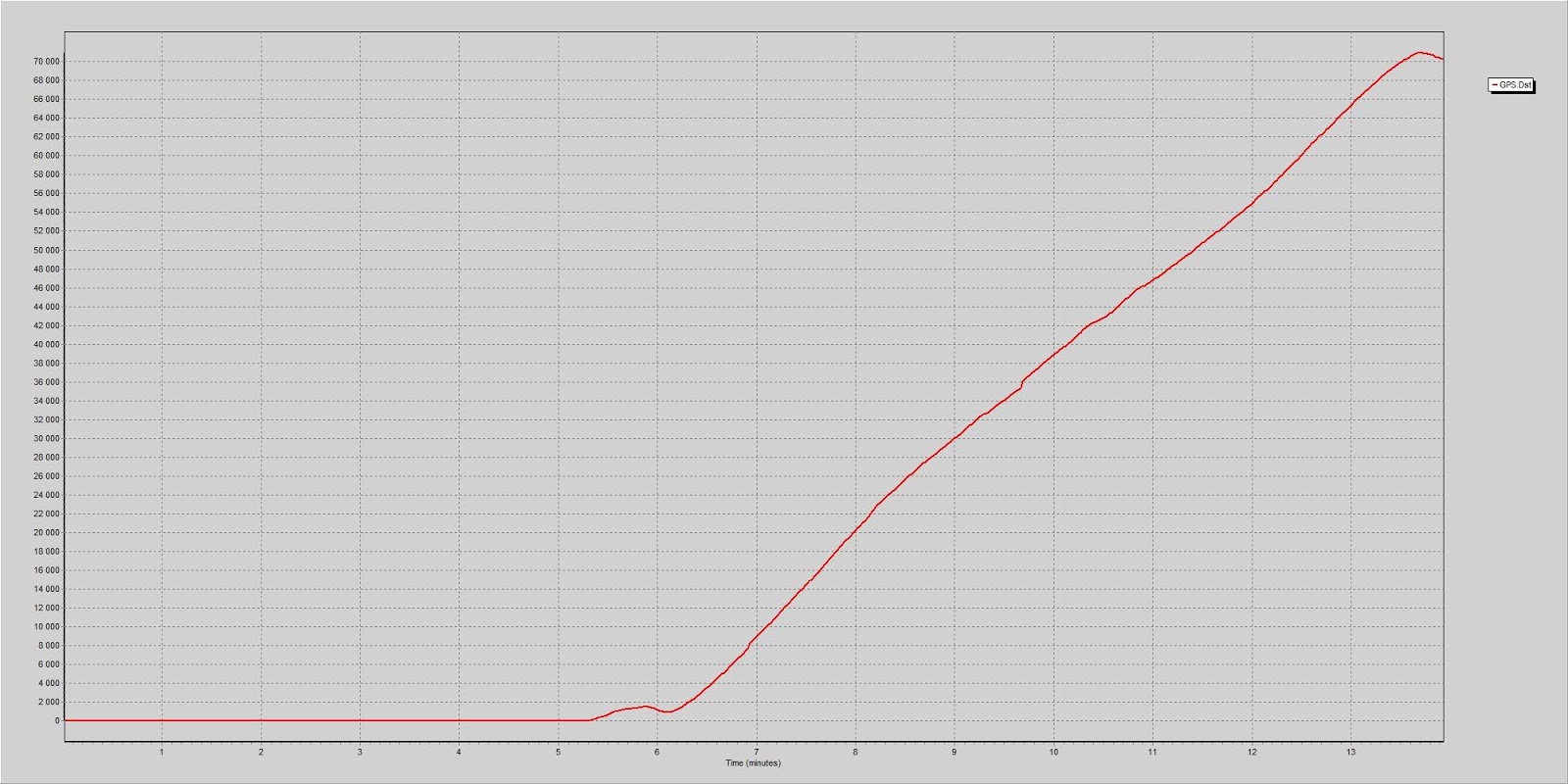
And so changed the vertical speed of the stratostat:

True, one of the two landing displays did not survive (yes, there were two of them, like the GoPro cameras; duplication is a good way to increase reliability), the video shows how it went in strips and turned off. But all the rest of the equipment suffered landing without any problems.
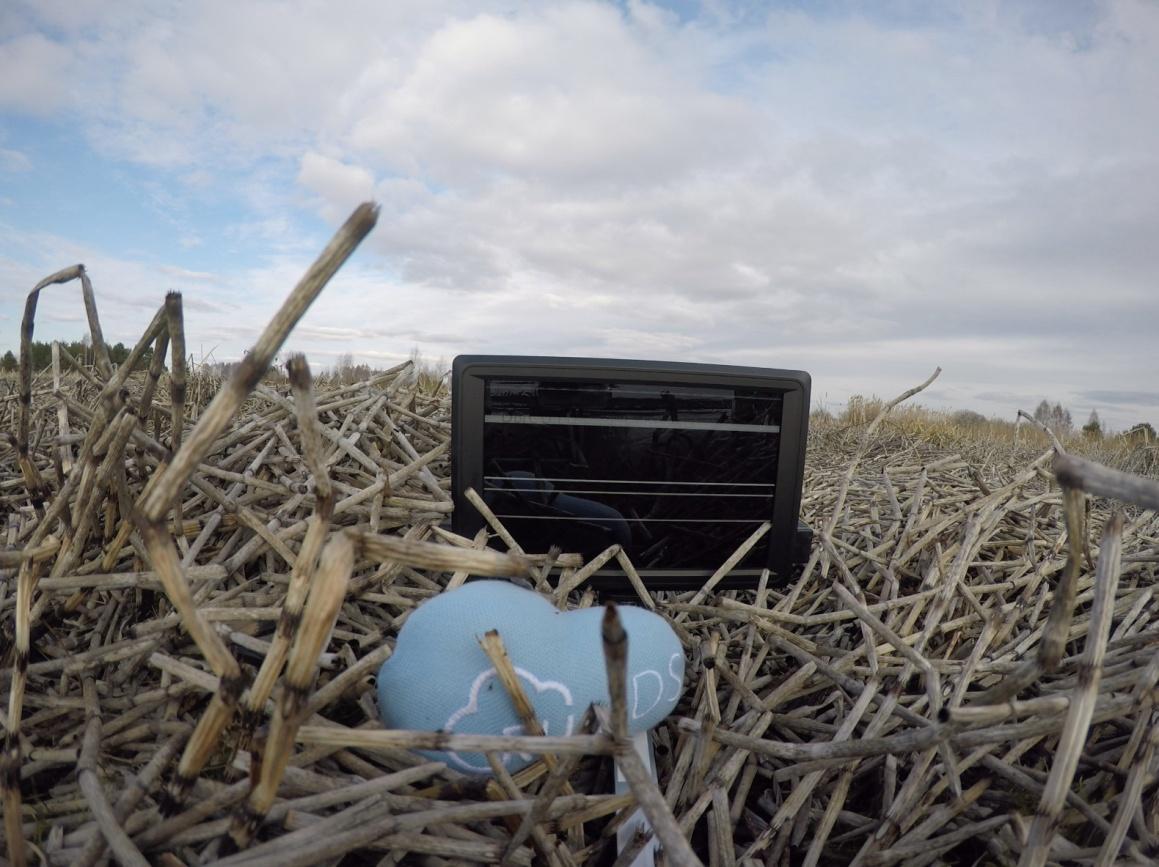
The server’s operation scheme looked like this: on the landing page, you could send text messages to the server via a form. They were transmitted via HTTP protocol through 2 independent satellite communication systems to a computer suspended under the stratospheric satellite, and the computer transmitted this data back to Earth, but not by the same route via satellite, but via radio. Thus, we understood that the server generally receives data, and that it can distribute the Internet from the stratosphere. On the same landing page, the flight graph of the stratostat was displayed, and it marked the points of receipt of each of your messages. That is, you could track the route and the height of the “transcendental server” in real time.

In total, our participants sent 166 messages from the landing page, of which 125 (75%) were successfully delivered to the server. The range of delays between sending and receiving was very large, from 0 to 59 seconds (average delay 32 seconds).
We did not find any noticeable correlation between the height and the delay level:

From this graph it can be seen that the level of delay did not depend in any way on the distance from the launch site, that is, we honestly transmitted your messages via satellites, and not from the ground:
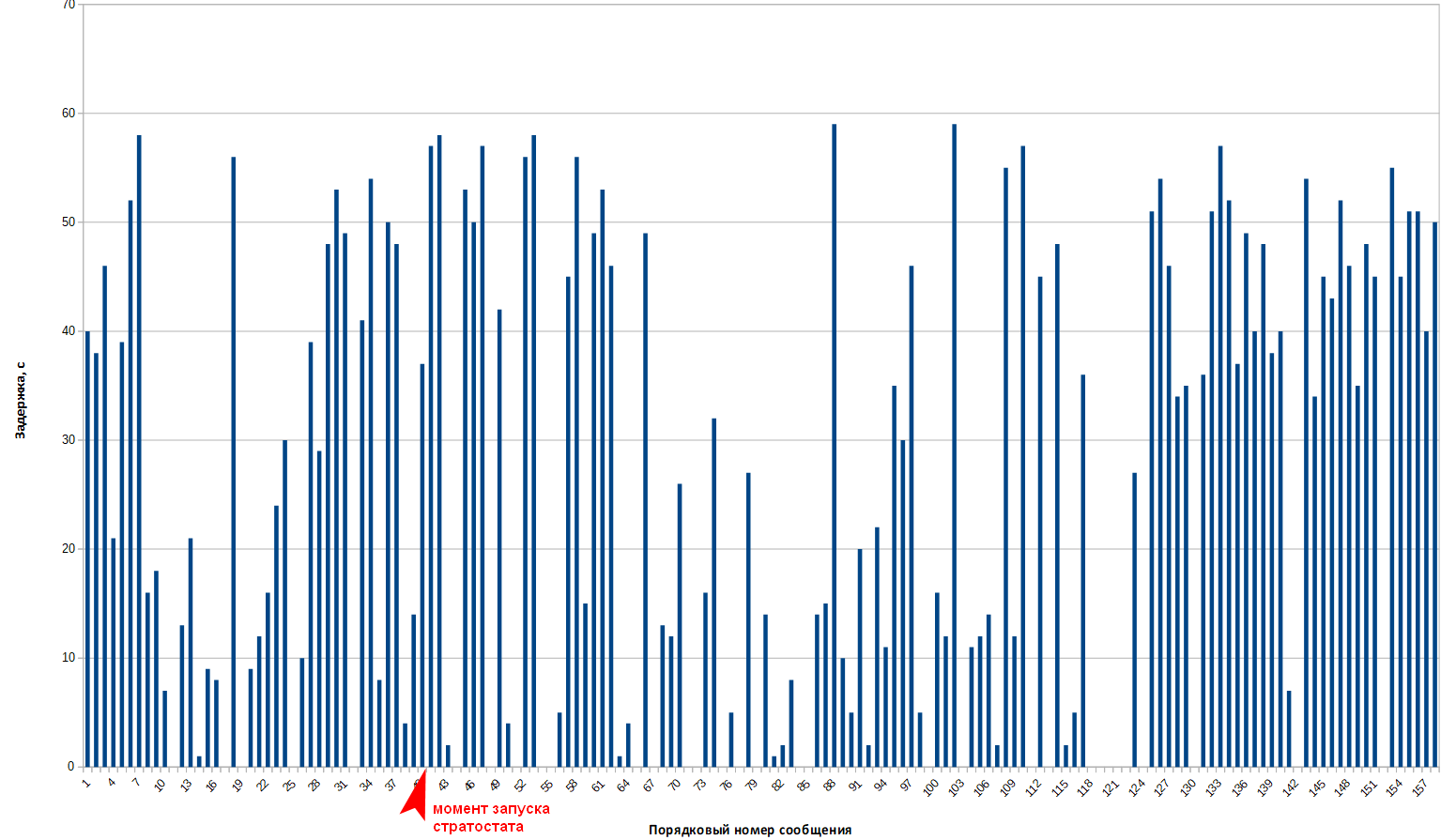
The main conclusion from our experiment is that we can receive and distribute the Internet signal from stratostats, and such a scheme has the right to exist.
As you remember, we promised to compare the connection between Iridium and GlobalStar (we did not receive the “Gonts” modem on time). The stability of their work in our latitudes was almost the same. Above the clouds reception is fairly stable. It is a pity that the representatives of the Russian Gonets system checked something there, prepared it, but could not provide anything for testing.
Now, we are planning the next project, even more complicated. Now we are working on different ideas, for example, not to arrange for us a high-speed laser connection between two stratostats, in order to use them as repeaters. In the future, we want to increase the number of access points and ensure a stable Internet connection speed of up to 1 Mbit / s within a radius of 100-150 km, so that the following launches will not cause any problems with the transfer of online video to the Internet.

A bit of background and useful links for those who missed everything:
- A post on how to coordinate the flight of the probe into the stratosphere (what we encountered in practice at launch).
- As we did the " iron part " of the project - for fans of geek-porn, with details and code.
- The site of the project, where it was possible to monitor the movement of the probe and the telemetry in real time.
- Comparison of space communications systems that we used in the project.
- Text translation of the server launch into the stratosphere.
Since we really wanted to launch on Cosmonautics Day and received official permission to use the airspace on that day, we had to adjust to the weather. And in order for the wind not to carry the stratostat over the limits of the allowed zone, we had to limit the height of the climb - instead of 30 km we climbed to 22.7. But this is already the stratosphere, and about twice as high as today passenger planes fly.
')
The internet connection with the stratostat was fairly stable throughout the entire flight. Your messages were received and displayed, and the resulting pauses were filled with quotes from Gagarin’s talks with the Earth 58 years ago :)

According to telemetry, it was -60 0 overboard, and inside the hermobox it reached -22 0 , but everything worked stably.
The graph of temperature changes inside (here and below on the scale of X dozens of minutes are postponed):

Another experimental digital high-speed transmitter was installed on board. This is our attempt to make high-speed Wi-Fi, and so far we are not ready to disclose the details of its design. With the help of this transmitter, we wanted to broadcast video online. And indeed, despite the cloudiness, the video signal from GoPro on board the stratosphere was received by us at a distance of up to 30 km. But having accepted the video in our TsUPe, it was not possible to transfer it to the Internet by land ... Now we will tell you why.
We will soon show video recordings of the flight from onboard cameras, but for now you can watch the online recording from the board of the probe.
We were waited for by a major surprise: the very poor performance of the 4G modem in our MCC, which made it impossible to transfer video online. Although the probe successfully received and transmitted messages via the Internet, they were received by the server - we received official confirmations from it and saw their display on the screen through video broadcast. We had concerns about communicating with satellites and transmitting a signal to Earth, but no one expected such an ambush that the mobile 4G Internet would be the weak link.

And not in some wilderness, but not far from Pereslavl-Zalessky, in an area that, according to MTS and MegaFon cards, is well covered by 4G. In our mobile MCC stood the heaped-up Kroks ap-205m1-4gx2h router, into which two SIM cards are inserted, and which had to summarize traffic on them so that we could fully broadcast the video to the Internet. We even installed external panel antennas with a gain of 18 dB. But this piece of iron worked disgustingly. Kroks support service could only advise us to fill in the latest firmware, but this did not help, and the speed of operation of two 4G-SIMs turned out to be much worse than the speed of operation of one SIM card in a regular USB-modem. So, if you can tell which piece of hardware is better to organize the transfer of data with the summation of 4G channels next time, write in the comments.

Our calculations of the trajectory were quite accurate, there were no surprises. We were lucky, the stratostatus landed on soft peat ground 10 meters from the reservoir and 70 km from the launch site. GPS Distance Graph:

And so changed the vertical speed of the stratostat:

True, one of the two landing displays did not survive (yes, there were two of them, like the GoPro cameras; duplication is a good way to increase reliability), the video shows how it went in strips and turned off. But all the rest of the equipment suffered landing without any problems.

Conclusions on the experiment and on the quality of the Internet connection.
The server’s operation scheme looked like this: on the landing page, you could send text messages to the server via a form. They were transmitted via HTTP protocol through 2 independent satellite communication systems to a computer suspended under the stratospheric satellite, and the computer transmitted this data back to Earth, but not by the same route via satellite, but via radio. Thus, we understood that the server generally receives data, and that it can distribute the Internet from the stratosphere. On the same landing page, the flight graph of the stratostat was displayed, and it marked the points of receipt of each of your messages. That is, you could track the route and the height of the “transcendental server” in real time.

In total, our participants sent 166 messages from the landing page, of which 125 (75%) were successfully delivered to the server. The range of delays between sending and receiving was very large, from 0 to 59 seconds (average delay 32 seconds).
We did not find any noticeable correlation between the height and the delay level:

From this graph it can be seen that the level of delay did not depend in any way on the distance from the launch site, that is, we honestly transmitted your messages via satellites, and not from the ground:

The main conclusion from our experiment is that we can receive and distribute the Internet signal from stratostats, and such a scheme has the right to exist.
As you remember, we promised to compare the connection between Iridium and GlobalStar (we did not receive the “Gonts” modem on time). The stability of their work in our latitudes was almost the same. Above the clouds reception is fairly stable. It is a pity that the representatives of the Russian Gonets system checked something there, prepared it, but could not provide anything for testing.
Future plans
Now, we are planning the next project, even more complicated. Now we are working on different ideas, for example, not to arrange for us a high-speed laser connection between two stratostats, in order to use them as repeaters. In the future, we want to increase the number of access points and ensure a stable Internet connection speed of up to 1 Mbit / s within a radius of 100-150 km, so that the following launches will not cause any problems with the transfer of online video to the Internet.
Source: https://habr.com/ru/post/448532/
All Articles